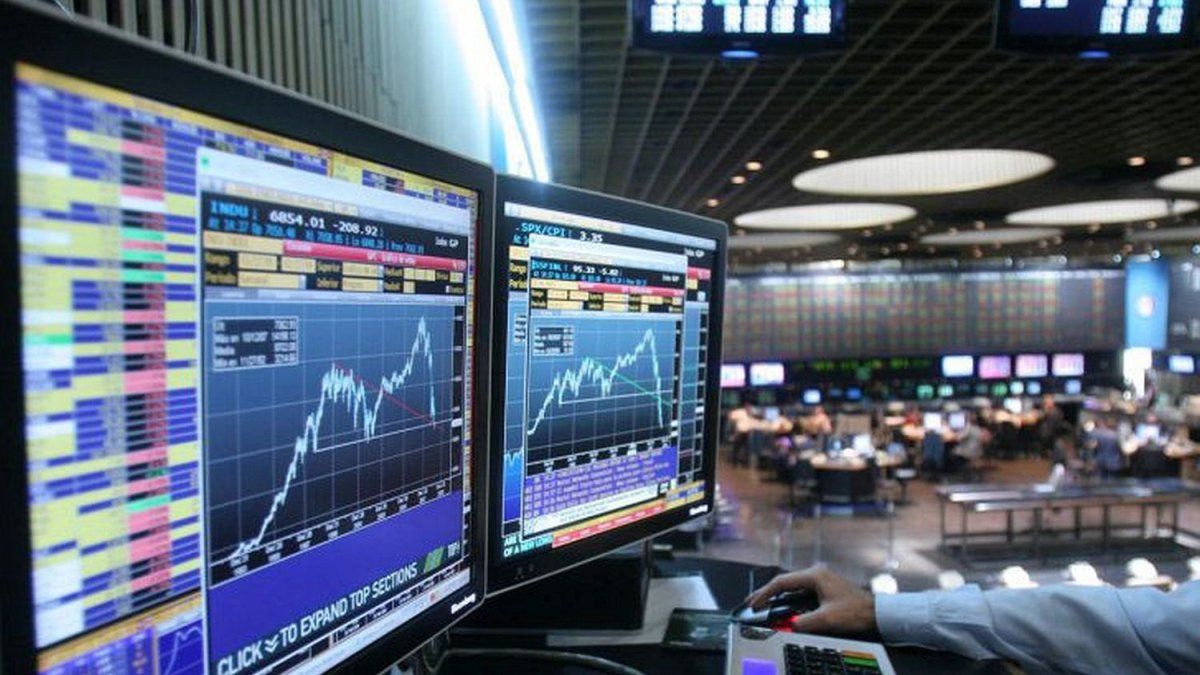During the so-called “Turkey crisis” in 2018, Turkey devalued by 14% and Argentina by 38%. In Turkey, the country risk increased by 106 bp, and in Argentina by 187 bp. Even if the problem is someone else’s, these policies always hit us harder.
Investors and the IMF were not and will not be willing to finance a new deficit in the tourism account, nor further dollarization of Argentine citizens’ portfolios. Argentina is facing an “exogenous shock” and, as in 2018, due to one of life’s circumstances, it is once again being hit with the same equipment.
This is the first shock, triggered by the US unemployment data and the carry trade or ““Mamachari” (the most popular bicycle in Japan), but the next one could come from fear of a crisis in some emerging country due to the change in the international financial situation. Interest in Argentine assets could collapse completely and the country could be battered.
In this context, Argentina would face a flight of Argentine assets, plus the final dollarization of portfolios, in a context in which the BCRA is extremely limited in using reserves to curb the dollar, due to the restrictive level of net international reserves and the agreement with the IMF, which does not provide money for renewals of Stand By to Extended Facilities, so that they “escape.”
Summary of reflections
- ADRs in New York fell, but recovered partly.
- The country risk is around 1600/1700 points, (so we do not return to the voluntary market).
- The BCRA bought US$17 billion, but has sold more than US$12 billion -Dec. 2023-July 2024-. (BCRA does not retain reserves).
- The “Nestor dollar” -2003-2007- is 89% appreciated.
- The “Caputo II dollar” -11-12-23- is appreciated by 48%.
- Caputo and Bausili are committed to combating exchange rate instability, but they have few bullets.
- Investors have not yet thought about what would happen if there were an indeterminate devaluation (the Merval in dollars could collapse).
To permanently solve the problem of the exchange market, it is not enough to detonate dollars, have an efficient securities and money table, apply the financial acumen of the Caputo-Bausili tandem, or the alleged incentives: should we leave dollars inside the corralito 2024? (bank deposit in dollars from the money laundering until the end of the year).
The problem is that the real exchange rate is not enough to calm the foreign exchange market for the rest of 2024, and the devaluation of the real and the drop in commodity prices are added to this. The increase in rate spreads on bonds of emerging countries, the appreciation of the dollar against other currencies and a drop in the terms of trade require another treatment.
The shortage of foreign currency is not a temporary problem that can be solved with clever measures; it is rather a structural problem. We Argentines think and save in dollars, so every time the financial cycle ends and there is difficulty in placing debt in global markets, the problem of not having a dollar reappears..
It was known that the strategy was risky and that no preventive measures had been taken, and here we are. The government committed to opening up the economy (commercial and financial), accelerating the fiscal surplus, reducing financing needs, reducing the primary deficit, without neglecting the payments of the debt that generated the financial deficit. In addition, it must be said that it absorbed a large part of the quasi-fiscal deficit, cleaning up the balance sheet of the BCRA, but putting debt on the Treasury. It corrected the inconsistencies of monetary policy that made the task of lowering the inflation rate very difficult, eliminating fiscal dominance and dismantling the stock of LEBACs. But “there are no dollars,” the countryside does not liquidate, the IMF does not lend anything more and capital flows flee to quality (“flight to quality”).
The Macri-Sturzenegger-Caputo Argentina obtained a loan from the IMF for US$ 50 billion (12.5 times its quota) in record time, with the political support of Donald Trump. But the IMF’s intention was for them to use only the first disbursement (the US$ 15 billion that came in on 06/20/2018), leaving the rest as a precautionary line (US$ 35 billion). The IMF’s intention was to restore lost confidence in order to return to the capital markets as soon as possible with macroeconomic policies that would make it possible to put public debt on a declining path. However, Macri used the entire US$ 44.5 billion, up to what would have corresponded to Alberto Fernández in 2020, and we never again placed debt on the markets to finance ourselves. We had fallen from the world.
In the midst of the current exchange rate turbulence, the BCRA prefers once again to use reserves to weather the storm, calm the rise of the dollar and prevent the complication of the nominalization of the economy, but it has a very limited capacity to do so, due to the reality of reserves, and due to the goal of reserves committed to the IMF. As we all know, the IMF is reluctant to finance capital flight; it prefers to let the exchange rate float so that the exchange market balances at a higher exchange rate, and they would have repeated this to Caputo at the G20.
The economic team is facing increasing problems in persuading the market that it is feasible to maintain the current exchange rate scheme. Even if the government manages to calm the current financial and exchange rate instability, the truth is that this turbulence will leave consequences. The economy has entered a recession that may be less short and less docile than Milei-Caputo is predicting; the IDB dollars, from the REPO, may not be enough to meet the demand for foreign currency, and it cannot be ruled out that, after a period of calm for the dollar, the nominal exchange rate ends up being higher than the current one with a real exchange rate at the end of the year that, in the same analysis, would be similar to that of December 2023, post-devaluation.
As can be seen, the chances of a transition to the mid-term elections with slight growth and falling inflation, as the economic authorities had predicted, are fading. The road to October 2025 looks more like a turbulent path. In any case, the scenario could be disorderly.
Everything seems to indicate that the economy has begun to go through a new period of depression, The indicators being monitored show collapses, the provisional data and the corresponding known data for the June-July 2024 period say that the GDP fall projection estimated by the IMF for the remainder of the year should be revised downwards: (-3.5%).
Milei and Caputo argued that the exit from the recession would be “V-shaped”. In our opinion, this recession might not be so light and may last longer than two or three quarters, as the most optimistic predict. Remember that the recession that began in 2018 lasted until 2021 (for the same economists it lasted 6 consecutive quarters) and they had to reestablish the exchange rate controls that were imposed in 2019, with another emergency economic team.
As can be seen, the 2024 recession would not be more docile than those recorded in 2018/2019/20 and 2022/23, when the economy contracted due to “malpractice 2018, 2019”, and “pandemic 2020”, “Russia-Ukraine war 2022”, “a drought of more than 23 billion 2023”. Unlike previous recessions, this time the economy faces the exogenous shock aggravated by the contractionary fiscal policy, the restrictive biased monetary policy and the destroyed wage mass, both by the fall in real wages and by the contraction of employment.
In conclusion, the Argentine economy has entered a new stage, but not the one described by the government. A new, worsened recessionary period has begun, triggered by the external shock, but caused by the bold and assumed macroeconomic vulnerability itself. A recessionary period that the consensus estimates will last at least two or three quarters (minimum) and that implies a devastating change to what has already been experienced. The year 2024 has already passed and 2025 will depend on the degree of conviction of the government to fulfill the commitments made. We do not rule out a major financial, economic and social crisis.
Director of the Esperanza Foundation. https://fundacionesperanza.com.ar/ Professor of Postgraduate Studies at UBA and Masters in private universities. Master in International Economic Policy, PhD in Political Science, author of 6 books, @pablotigani
Source: Ambito
David William is a talented author who has made a name for himself in the world of writing. He is a professional author who writes on a wide range of topics, from general interest to opinion news. David is currently working as a writer at 24 hours worlds where he brings his unique perspective and in-depth research to his articles, making them both informative and engaging.




